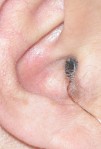solderdude
Grand Contributor
Just to be clear, what I posted (and compared to your measurements) is with no DSP or EQ of any kind. There was no room curve, I just placed the Harman line on the same chart to illustrate that the in-ear response of HD650 closely resembles the recommended Harman room curve of -10dB.
Yes I got that part.. What I mean is that I lowered the response below 200Hz a few dB in my measurement on purpose (as to mimic how I perceive it) .
You measured it 'RAW' and justified it by drawing in an 'in room preference curve' which basically is the exact same thing.
Most 'loopbacks' are done using the line input or input set to line levels.
In mic position the frequency response might not be flat any more.
Could also be that the mic is not optimized for the mic input.
I don't know... just summing up possibilities that may be relevant, or may not be.
In any case I know this isn't the case with my dedicated pre-amp with 100% certainty.

